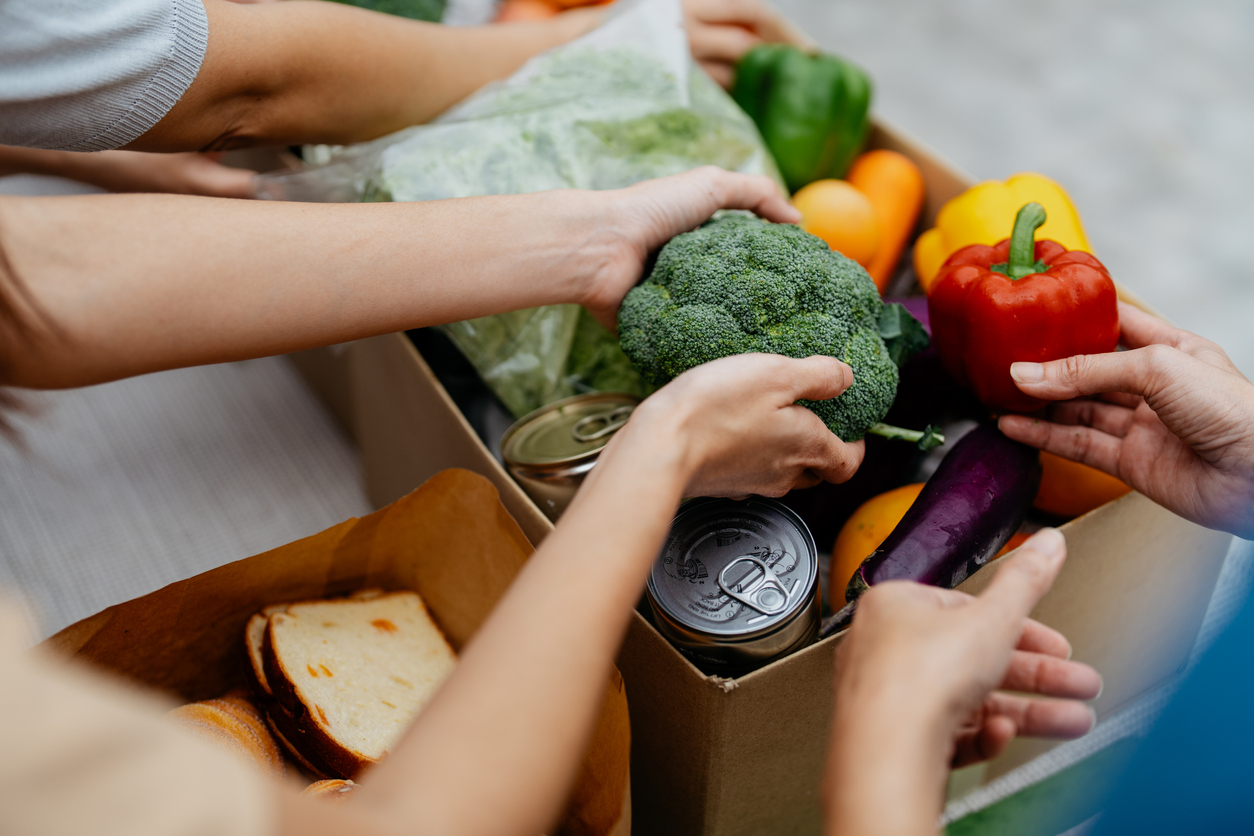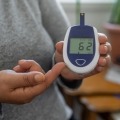Improving Food Insecurity for People With Diabetes
By Hope Warshaw Natalie Sainz
 People dealing with access to food are more likely to have overweight, obesity, or type 2 diabetes. If you face barriers to accessing nutritious foods, there are resources that can help.
People dealing with access to food are more likely to have overweight, obesity, or type 2 diabetes. If you face barriers to accessing nutritious foods, there are resources that can help.
Eating a healthy diet, which is fundamental to diabetes management, starts with having access to nutritious foods. Unfortunately, many people with diabetes tend to be more adversely affected by food insecurity, which is a lack of consistent access to food needed for healthy living.
Nearly 20% of people with diabetes have some level of food insecurity. There are also certain demographics of individuals with type 2 diabetes who are at greater risk for food insecurity including those who are Black, Hispanic, or do not have a high school diploma.
Food insecurity is “a key pathway that creates health disparities,” said Dr. Seth Berkowitz, associate professor of medicine at the University of North Carolina Chapel Hill, with evidence showing that people who don’t have access to nutritious foods are more likely to have overweight or obesity, type 2 diabetes, or gestational diabetes.
While more work needs to be done to address the millions of American adults (with or without diabetes) experiencing food insecurity, there are lots of interventions and food resources in place to improve health.
With a focus on initiatives like the Food as Medicine movement, getting people access to nutritious and sufficient foods becomes a priority to improve overall health and reduce the risk of chronic diseases like diabetes.
Impact of food insecurity on people with diabetes
Food insecurity has an important impact on health, said Berkowitz. For example, it’s been shown to worsen A1C, blood pressure, and cholesterol levels. It also could contribute to diabetes complications.
According to Berkowitz, food insecurity worsens diabetes outcomes through at least three significant pathways:
-
Nutritional: People may end up choosing cheaper foods that are also often considered unhealthy. Limited dietary options in turn may increase body weight.
-
Financial: People with diabetes may be faced with the difficult decision of choosing between spending their money on medications or nutritious, healthy foods. This trade-off leads to a decreased focus on diabetes self-management.
-
Psychological: The stress of dealing with food insecurity can also increase depression and diabetes distress.
All of these factors alone or combined may end up worsening metabolic control and increasing the risk of cardiovascular complications. In addition, food insecurity and its related burdens can sap peoples’ energy to effectively manage their diabetes.
Barriers to healthy eating
Food insecurity is considered one of the social determinants of health, along with safe housing, economic stability, and other conditions in which people live.
In their 2023 Standards of Care, the American Diabetes Association (ADA) increased the attention they recommend healthcare providers take to address social determinants of health as an integral part of diabetes care. One of the most widely used tools for assessing and identifying people with food insecurity is the Hunger Vital Sign, which is a simple, validated two-question screening tool that is easily implemented in clinical practice.
While barriers to healthy eating are still a major problem, the good news is attention to food insecurity has increased in recent years. If the healthcare system and providers can improve screening for food insecurity and, in turn, implement interventions that improve access to food, healthcare costs may be minimized down the road.
Efforts underway to improve nutrition
Over the past few years, Berkowitz and other researchers have been studying a variety of innovative solutions under the umbrella of Food as Medicine.
Cash or near-cash programs
This includes programs like the Supplemental Nutrition Assistance Program (SNAP), which offers food benefits to low-income families and individuals. Another is the Special Supplemental Nutrition Program for Women, Infants, and Children (WIC), which gives federal grants to states to provide specific supplemental foods and healthcare referrals to populations in need.
Also included within these programs are “produce prescriptions,” which are similar to prescription medications provided by healthcare providers, except they’re for fruits and vegetables.
Foods given to people in kind
This is where non-profit and social service organizations like food banks come into play. There are hundreds of food banks in the U.S.; research shows that not only can food banks improve access to healthy food, but they can also help screen clients at high risk for conditions like diabetes. This makes food banks important partners in working to prevent diabetes in demographics facing food insecurity.
Some food pantries offer up boxes filled with pre-chosen foods. Others allow people to choose the foods they want from what’s available at the time.
Medically-tailored meal programs (MTM)
These are customized and fully prepared meals for people living with chronic conditions, such as diabetes. MTMs aim to provide meals that are “medically tailored” to the health needs of the recipient.
Typically, the recipient’s nutritional needs are assessed by a registered dietitian. They are then provided either a full or partial replacement of all the meals they will need for a specified period. MTM programs help overcome barriers related to food insecurity by reducing the time it takes to prepare food and removing educational roadblocks regarding healthy food preparation and eating.
Berkowitz, whose research focuses on MTMs, noted that MTM programs that fully replace food have been shown to have the greatest impact on improving overall health and reducing food insecurity. The catch is, they are expensive to operate.
The other type of MTM, which replaces about half the meals a person needs each week, is less expensive but doesn’t have as significant of an effect on health as the complete replacement programs. Foods for MTMs are typically prepared through community-based programs or commercial food providers.
The bottom line
Food insecurity can seem like an overwhelming issue, but Berkowitz explained how society can approach food insecurity and diabetes both inside and outside the healthcare system.
As far as beyond the healthcare system, Berkowitz emphasized the need for stronger income support programs and improved implementation of them.
“How you implement programs is as important as having programs,” said Berkowitz. It’s also important to identify who might be most at risk for food insecurity and address those risks before they become a problem.
For inside healthcare approaches, Berkowitz stressed psychosocial support as well as material resources. For example, a community health worker could provide an individual with psychosocial support, as well as link them to available community resources. Material resources include medically tailored meals, food pantries, and food subsidies that are necessary to improve access to proper nutrition.
“Do not let working within healthcare become a way to avoid confronting structural issues that cause food insecurity. Both need to be going on at the same time,” said Berkowitz.
Many organizations and government programs have a Food as Medicine (or Food is Medicine) initiative to address the ongoing needs of people facing food insecurity. Some examples include the national strategy that came out of the 2023 White House Conference on Hunger, Nutrition, and Health. Both the American Heart Association and The Rockefeller Foundation have programs in place to ensure people receive medical prescriptions for healthy foods.
Additionally, federal legislation is now in place that requires the Centers for Medicare and Medicaid and Services to pilot a medically tailored meal program that delivers meals to people’s homes.
If you or someone you know is experiencing food insecurity, here are some more resources that can help:
-
Aunt Bertha is a free, online database that’s helped almost four million people find free or reduced-cost food and other essential services in their area. You can browse 10 categories – including food, housing, health, legal, and education – by zip code or by state.
-
Feeding America allows you to find free food and groceries nearest to you by putting in your zip code.









